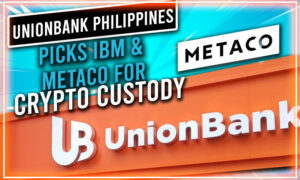
The start of the next monetization revolution in gaming is just around the corner: blockchain gaming. Other names for the blockchain gaming industry include GameFi and play-to-earn, which refer to the new monetization strategies that have emerged in this era of gaming. Non-fungible tokens (NFTs) or other tokenized assets are commonly used in blockchain gaming and traded for cryptocurrencies on blockchain-facilitated exchanges. As a result, sales of tokenized assets and subsequent royalty proceeds represent the key monetization strategy. In this new business model, game creators and players have aligned motivations because both gains as the game’s tokenized assets increase in value. The idea is that gamers should own the content they earn, or at the very least, have more ownership in the digital environments in which they spend a considerable amount of their time and money. Problems Currently Faced by Traditional Gaming Players don’t truly own anything Last year, gamers spent more than $50 billion on in-game items such as clothes, weapons, and power-ups. These purchases usually improve a player’s performance and enjoyment of the game. They have no other use, and you can’t sell, lend, or collateralize them. They now fall into entertainment spending rather than a serious investment. Interoperability across games is limited For the most part, today’s games are still walled gardens. They are separate planets with their own set of things and experiences. Game makers should have complete creative authority over their work. Lack of business model optionality Free-to-play (or ‘freemium’) games account for 80% of overall digital gaming income. Most successful paid games, such as CS: GO, are based on skins. This trend has benefited players—paying $0.99 for a mobile game is almost unheard of, but it has limited the design area available to some developers. As new economic models for game producers arise (such as commissions on secondary NFT purchases), new forms of gameplay will emerge. Properties of NFTs Which Gives a Boost to Blockchain Gaming NFTs are a significant value proposition in different blockchain games and operate as a primary primitive for blockchain assets. NFTs in blockchain games bring a variety of advantages to games, including asset ownership, asset programmability, new incentivization, and innovation options. Ownership of Assets The game creator controls and owns in-game assets rented out to players in legacy games. In contrast, players in blockchain games retain actual ownership of their digital assets, whether in-game currency or more specific investments such as skins account names, in-game land, or other assets. The programmability of Assets NFTs can be programmed to have varied attributes or be constructed with in-game utility because they are essentially software on blockchain networks. NFTs can be programmed with various unique use cases, such as single-use, unlocking content, or awarded to users that achieve a certain status. Incentivization and Innovation Game developers are already amongst the most knowledgeable when it comes to incentives. NFTs offer an additional layer of economic incentives by enabling players to earn yield-generating assets and build a more robust gaming economy via in-game currencies and NFT marketplaces. Some of the Popular Blockchain Games Axie Infinity Axie Infinity is an NFT-based online video game inspired by Pokemon Go. It was the first metaverse project to introduce a play-to-earn gaming model. Axie Infinity is present on the Ethereum blockchain and has two cryptocurrency tokens associated with it, i.e., AXS, a governance token that holders of tokens can use to vote on governance proposals to decide the future of the game. Beyond that, AXS holders can stake their tokens to earn more AXS tokens. Smooth Love Potion (SLP) is the second cryptocurrency token linked to Axie Infinity. Players here raise, breed, and combat their Axies (digital creatures), earning Smooth Love Potion tokens for each victory in-game. Axies and digital land are NFTs that players may purchase and sell in the game, while SLP tokens can be sold on exchanges. The Sandbox The Sandbox is a decentralized community-owned virtual world where creators can create their avatars. Sandbox and Roblox are frequently compared by analysts owing to their comparable gameplay. The main distinction with Sandbox is that players have complete control over their virtual assets. The Sandbox has an ERC 20 token called SAND. It is used as both a utility and a governance token. To buy and sell NFTs like LAND and assets in the Sandbox’s marketplace, you will need SAND. In addition, the SAND token is used for participating in governance functions. Decentraland Decentraland is a virtual environment where users can buy land, develop it, monetize it, and immerse themselves in other users’ applications and content. The community owns the Decentraland project in a decentralized manner. It is powered by Ethereum’s blockchain. In Decentraland, gambling casinos draw a large crowd on special event nights. Players can win prizes by participating in events. The native … Continued
The post The Blockchain Gaming is The Future appeared first on Cryptoknowmics-Crypto News and Media Platform.










